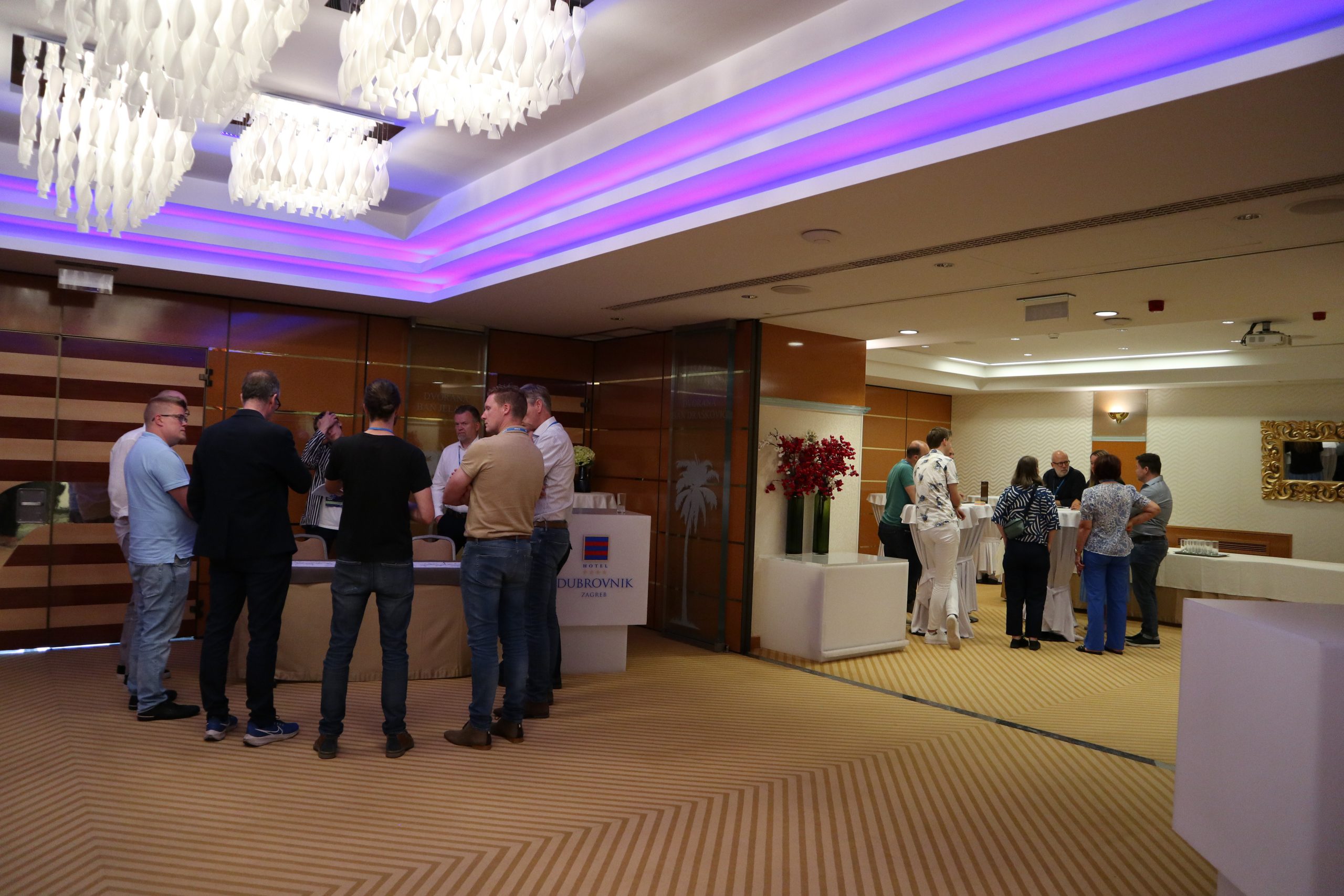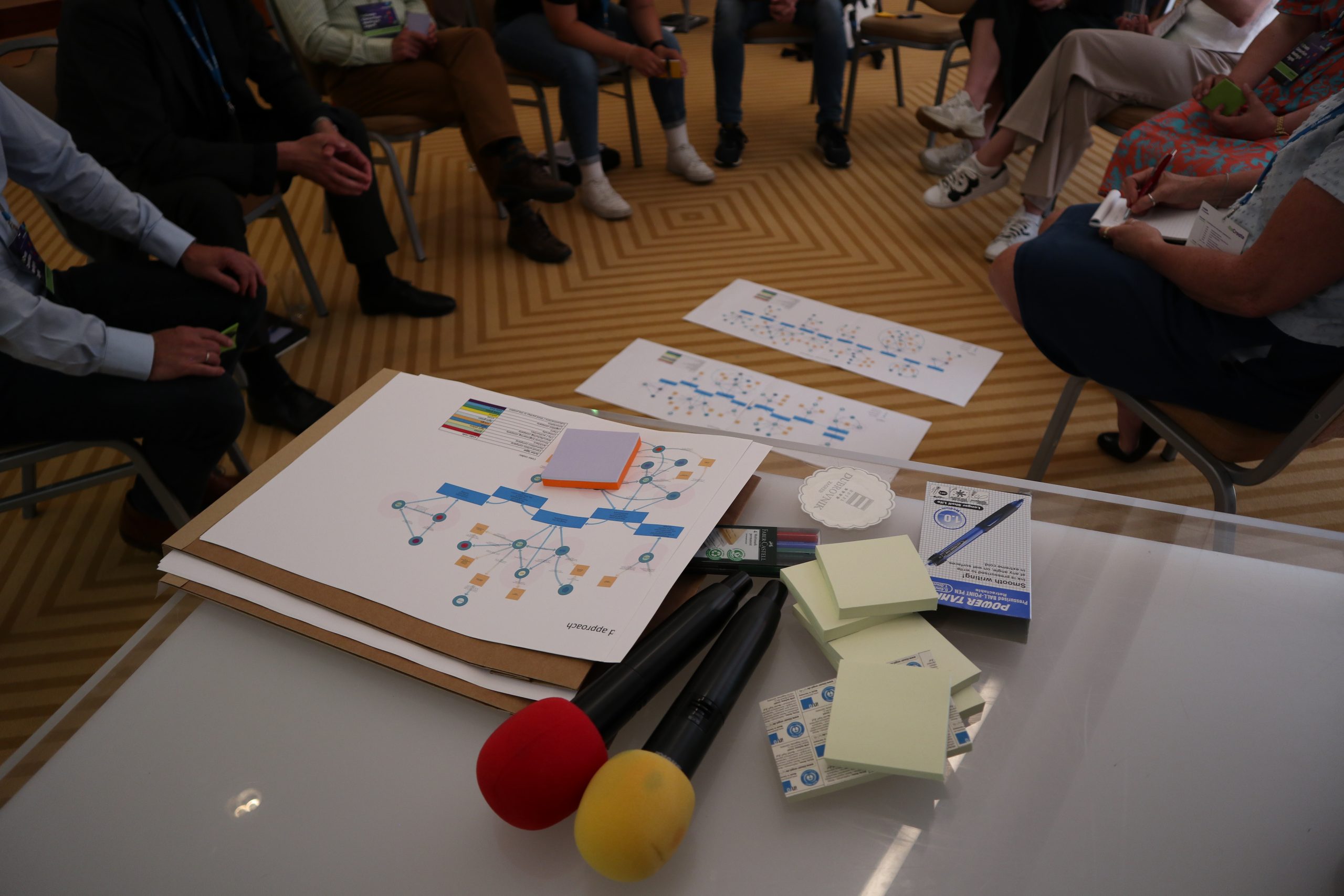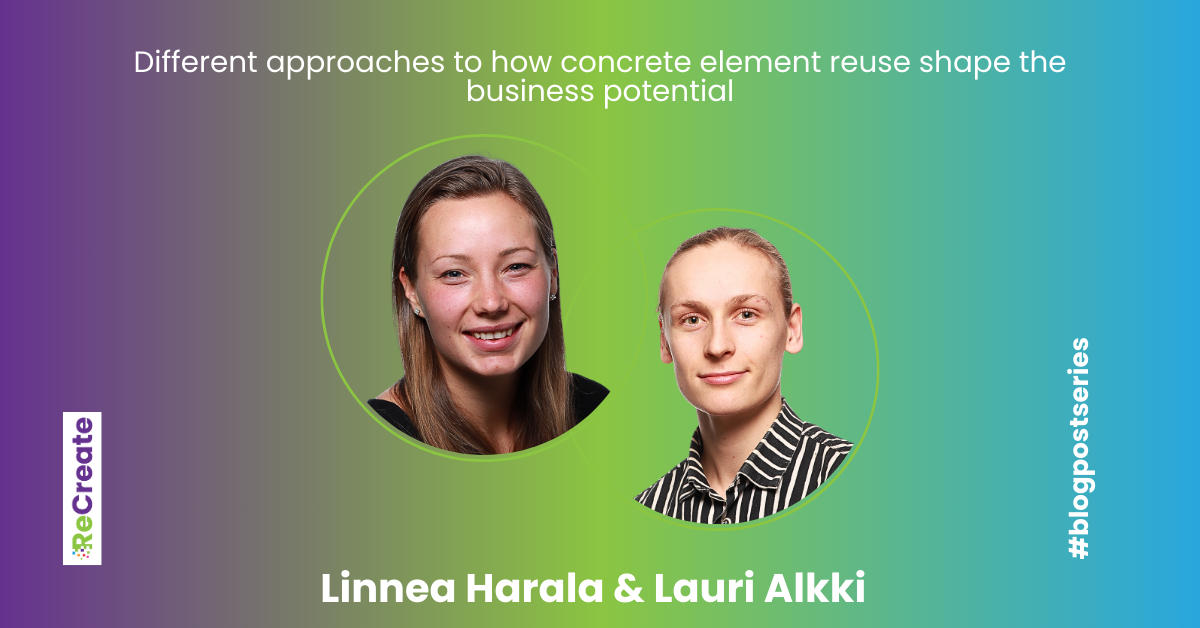Written by Linnea Harala & Lauri Alkki
The ReCreate pilot projects in Finland, Sweden, Germany and the Netherlands highlight diverse approaches to implementing concrete element reuse, each influenced by unique building types, contexts and organizational structures. An initial analysis by ReCreate’s business research work package (WP7) has revealed distinct patterns in these approaches, primarily categorized into centralized and decentralized models. During the ReCreate annual meeting in Zagreb, WP7 also organized a workshop to present the identified approaches to other project partners and to get feedback on the initial analysis.


Figure 1 & 2. Workshop between ReCreate partners at the annual meeting in Zagreb on the preliminary results of the two different approaches.
The identified approaches – A) centralized & B) decentralized
The centralized approach is characterized by a single key actor managing multiple phases of deconstruction and reuse. This model is most prominent in the Netherlands. There, the same actor is responsible for deconstructing a building and reusing most of its elements in a new structure, a process referred to as 1-on-1 reuse. The ecosystem in a centralized model is simple, with a central hub managing all operations. The key actor controls the flow of information and data mostly internally, ensuring streamlined communication and decision-making. In addition, the key actor’s business model extends to both deconstruction and reuse, highlighting its capabilities and resources. A strong single actor can oversee the entire project, facilitating optimized and controlled execution. With one key actor at the helm, there is a clearer distribution of tasks and responsibilities. On the other hand, success depends heavily on the performance and capabilities of the key actor.
Conversely, the decentralized approach involves multiple specialized actors managing different phases of deconstruction and reuse. This model is evident in Finland and Sweden, where elements are harvested and reused in various buildings. The ecosystem in the decentralized approach consists of several specialized, complementary companies and organizations. Therefore, effective communication and data sharing between these actors has been identified as a critical factor for success. In the decentralized approach, each actor operates based on its expertise and specialization, contributing to a more diversified and flexible business landscape. The feasibility of the decentralized model depends on how well the project organization coordinates multiple companies. This complexity requires robust inter-organizational collaboration to ensure smooth transitions between phases, as multiple actors require more discussion to define responsibilities at different stages, at least initially.
Overall, it can be seen that in the centralized approach, the control of the dominant key actor can streamline operations, but it relies heavily on this actor’s capabilities. On the other hand, the decentralized approach, while more complex, offers flexibility and the potential to leverage a wider range of expertise. In both approaches, the work phases and tasks are largely the same, but their overlap and sequence may vary. Ultimately, understanding these approaches allows for better strategic decisions throughout the concrete element reuse process, promoting more sustainable and efficient construction practices.


